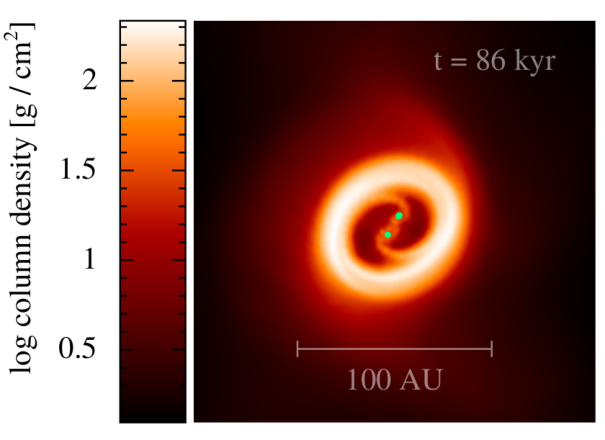Protostellar outflows increase the fraction of Twin-binaries
Paul Rohde
Observations show an excess of almost equal mass binaries systems, called “Twin-binaries”. It is not yet clear why these Twin-binaries are so frequent. One possible formation path is via circumbinary disc accretion. In an unequal mass binary system, the lower-mass component has a wider orbit. Gas from a surrounding circumbinary disc will preferentially be accreted onto the outer, lower-mass component. This effect naturally drives the mass ratio of the two stars towards equality. However, this effect may only explain the high fraction of Twin-binaries if the accretion onto the stars predominantly occurs via the circumbinary disc.
Fig. 1 shows such a scenario in one of our simulations. Here, a binary system is surrounded by a massive accretion disc. The accretion streams channel gas from the circumbinary disc onto the two protostars.
We are able to reproduce the observed high fraction of Twin-binaries in our simulations. Fig. 2 shows the distribution of mass ratios from all binary systems that formed in our sample of 88 simulations. The mass ratios, q, are computed by dividing the mass of the secondary by the mass of the primary star at t = 5 tff after the first star forms. We divide these simulations into an OF-sample with outflow feedback and an RF-sample without outflow feedback. Interestingly, only the sample with outflow feedback (orange) shows an excess of Twin-binaries, q > 0.5 (dashed grey line).
We analyse the accretion history of these binary systems and find that in simulations with outflow feedback, more gas is accreted from the surrounding circumbinary disc. Therefore, outflow feedback limits the accretion from other directions but the circumbinary disc. The higher disc accretion, in turn, increases the fraction of Twin-binaries.

